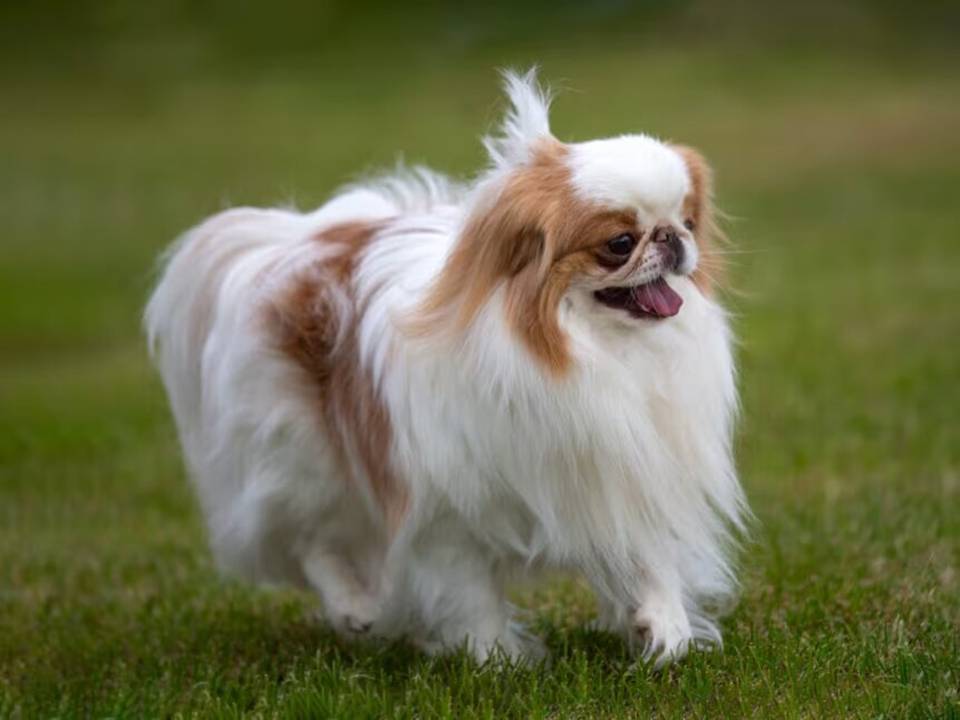The Japanese Chin the Perfect Companion
The Japanese Chin dog is a toy breed celebrated for its regal appearance, graceful demeanour, and affectionate personality. Despite its name, this elegant dog originated in ancient China and Korea before becoming a cherished symbol of Japanese aristocracy. Over centuries, the breed evolved into a beloved companion, eventually spreading to the West. Let’s explore the fascinating journey of the Japanese Chin dog, from its ancient origins to its modern-day popularity.
Ancient Origins: China and Korea
The Japanese Chin dog likely traces its roots back to ancient China, where breeders developed small, flat-faced companion dogs for the imperial courts. These dogs, including ancestors of the Pekingese and Shih Tzu, were prized for their beauty, calm temperament, and spiritual significance. Chinese aristocrats often gifted these dogs to foreign dignitaries, spreading their influence across Asia. Korea, in particular, received these dogs and further refined the breed. Eventually, the breed made its way to Japan, where it became known as the Japanese Chin dog.
Arrival in Japan: Breed Development
By the 6th century, small companion dogs resembling the Japanese Chin dog had arrived in Japan. Buddhist monks and Korean diplomats often brought them as gifts for Japanese nobility. The breed quickly gained favour in the imperial court, where breeders refined its small size, elegant features, and charming personality. Unlike other dogs, the Chin was bred exclusively as a companion, symbolizing luxury and refinement.
During the Edo period (1603–1868), the Japanese Chin became a status symbol, reserved only for the imperial family and high-ranking officials. These dogs enjoyed a life of privilege, often treated as equals to their human owners. Some even had their own attendants, highlighting their esteemed position in Japanese society.

Symbolism and Cultural Significance
In Japan, the Japanese Chin represented wealth, prestige, and sophistication. Its close association with the aristocracy made it a living embodiment of elegance. Many viewed the breed as a spiritual being, embodying grace and beauty. Artists frequently depicted the Chin in paintings and porcelain sculptures, further cementing its status as a luxury pet. Additionally, the breed played a role in cultural diplomacy, as Japanese nobility often gifted these dogs to foreign dignitaries.
Introduction to the West: The 19th Century
The Japanese Chin remained relatively unknown in the West until the mid-19th century. In 1853, American Commodore Matthew Perry opened Japan’s borders, marking the beginning of cultural exchange between Japan and the West. As part of this exchange, Perry received Japanese Chins and brought them to the United States. These dogs were among the first Japanese Chins to be seen outside Japan. Around the same time, the breed also reached Europe, where it quickly gained popularity among European royalty. Queen Alexandra of England, in particular, played a significant role in popularizing the breed in Britain during the late 19th century.
Breed Evolution in the West
Once introduced to the West, the Japanese Chin underwent subtle changes as breeders sought to enhance its distinctive features. Western breeders focused on refining its small size, pushed-in face, and silky coat. Over time, the breed’s appearance became more standardized, and dog clubs and exhibitions began to formalize breed standards. The American Kennel Club (AKC) officially recognized the Japanese Chin in 1888, solidifying its status as a beloved toy breed in the United States.
The Modern Japanese Chin
Today, the Japanese Chin retains much of its original charm and elegance. The breed boasts a small, compact body, a broad face, large dark eyes, and a silky coat. Known for its cat-like independence and affectionate loyalty, the Japanese Chin continues to captivate dog lovers worldwide. Modern Chins are admired not only for their graceful demeanour but also for their ability to form deep bonds with their owners.
Conclusion: A Legacy of Elegance and Companionship
The Japanese Chin’s rich history reflects its enduring ties to nobility, luxury, and companionship. From its origins in ancient China and Korea to its refinement in the imperial courts of Japan, the breed has been shaped by centuries of cultural significance and selective breeding. Today, the Japanese Chin remains a beloved companion, a living symbol of the elegance that first endeared it to Japan’s aristocracy. Its journey from royal palaces to the homes of modern dog lovers underscores its timeless appeal and enduring legacy.


